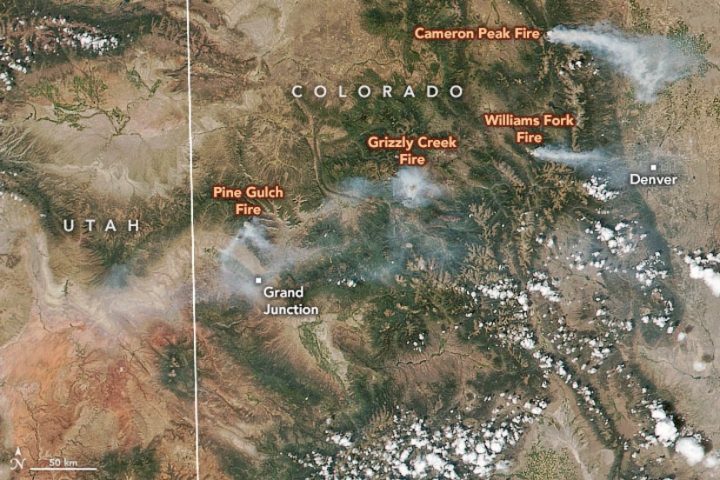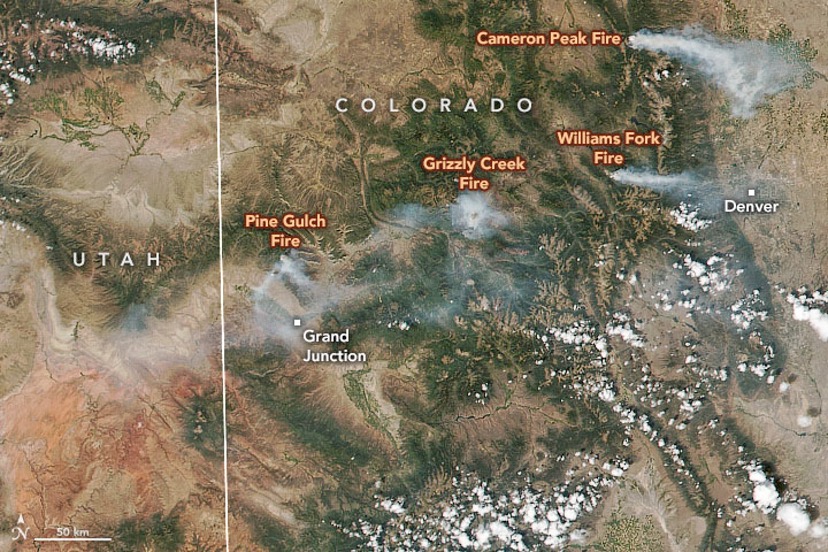This article by Newsline Staff was last updated on September 9, 2020 and appeared on ColoradoNewsline.org
Four major wildfires have burned an area of more than 286,000 acres across Colorado in recent weeks, causing evacuations, highway closures and potentially hazardous levels of smoke and other forms of air pollution in many parts of the state.
Amid hot, dry weather that has left 100% of the state under an official drought classification for the first time in seven years, the 2020 wildfire season is on track to be among the most active in state history.

The Pine Gulch Fire has burned an estimated 139,007 acres in an area north of Grand Junction. It was ignited by a lightning strike on July 31, and is 87% contained.
The Grizzly Creek Fire has burned an estimated 32,464 acres along Interstate 70 and the Colorado River east of Glenwood Springs since igniting on August 10. Its cause remains officially undetermined, though officials suspect it was caused by a passing vehicle on the interstate. The fire is 83% contained.
The Cameron Peak Fire has burned an estimated 102,596 acres near Chambers Lake in western Larimer County since igniting on August 13. Officials say the fire is human-caused, and it is 4% contained.
The Williams Fork Fire has burned an estimated 12,157 acres near the Williams Fork Reservoir in Grand County since igniting on August 14. Officials say the fire is human-caused, and it is 10% contained.
Colorado’s changing climate has increased the risk of dangerous wildfires. Rising concentrations of heat-trapping gases in the earth’s atmosphere — mostly the result of fossil-fuel combustion — have caused many parts of the state, especially on the Western Slope, to warm by an average of more than 4 degrees Fahrenheit above pre-industrial levels. All of Colorado’s 20 largest wildfires on record have occurred since 2002, during a 20-year “hot drought” that scientists say is driven largely by higher temperatures.
In 2017, the Colorado State Forest Service reported that more than 2.9 million Coloradans lived in the “wildland-urban interface” — areas at risk of being impacted by wildfires. Fire safety experts urge residents of such zones to familiarize themselves with the “Ready, Set, Go” system of precautions.

